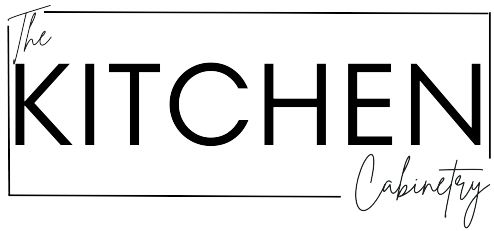In today’s fast-paced world, the way we store our belongings has gone through a radical transformation. The traditional understanding of storage is being redefined, allowing us to turn our closets into meaningful reflections of our lives. By shifting our focus from mere storage to organized statements, we can create spaces that truly express who we are. This blog post will explore how effective storage solutions can lead us to a more organized and personalized lifestyle.
Table of Contents
ToggleMain Points
- Understanding the importance of decluttering and organization.
- Transforming closets into functional spaces that tell a story.
- Practical tips for efficient storage and personalization.
Understanding the Importance of Data Storage in Modern Businesses
In today’s digital age, effective data storage is crucial for businesses to thrive. The overwhelming amount of information generated requires a structured approach. This enables companies to make informed decisions. However, many struggle with finding the balance between accessibility and security. Thus, organizations must evaluate their storage needs carefully. They should consider variables like data volume and compliance requirements. Here are a few considerations for optimizing your data storage:
- Scalability: Can your storage solution grow with your business demands?
- Cost-effectiveness: Does the storage option align with your budget constraints?
- Security: Are your data protected against unauthorized access?
Key Strategies for Converting Raw Data into Actionable Insights
Transforming raw data into actionable insights requires a strategic approach. First, identify the most relevant furnitures that will impact your decisions. Organizing data into digestible formats can help clarify trends and patterns. Second, integrating visualization tools can uncover what numbers often obscure. Remember, actionable insights do not arise incrementally. Instead, they often stem from a rich analysis that considers diverse perspectives, leading to informed decisions. Therefore, remain open to novel correlations within your data.
Innovative Tools and Technologies for Enhanced Data Transformation
In today’s digital landscape, the need for efficient data transformation is paramount. Innovative tools like data wrangling software and machine learning algorithms elevate traditional methods. However, it’s essential to choose the right technology that aligns with your organizational goals. By leveraging these advanced solutions, businesses can clean, analyze, and visualize data more effectively. Interestingly, some firms still grapple with data silos, complicating integration. Exploring furnitures for organizing data workflows can significantly streamline processes.
The Future of Data Transformation Tools
As tech evolves, the role of automation in the transformation process shrinks human error, making it vital for stakeholders to stay informed. Additionally, predictive analytics can offer surprising insights, often leading to unexpected strategies. Balancing innovation with practicality will define how businesses utilize data moving forward—especially with regards to incorporating furnitures that support collaborative efforts in data handling.
The Role of Data Visualization in Making Storage Statements Clear
Data visualization plays an essential role in simplifying storage statements. By transforming dense information into clear visual formats, it enhances understanding. Consider the impact of various graphical elements. For example, charts and graphs can condense complex data sets, making them more digestible. Additionally, visuals can highlight trends effectively, thereby aiding decision-making. However, not all visuals communicate equally well. The choice of colors and formats can sometimes introduce confusion instead of clarity.
- Furnitures: This refers to the essential items that occupy storage spaces.
- Furnitures: Understanding how these items are arranged can influence space optimization.
- Furnitures: Their dimensions matter when visualizing available storage capacity.
Best Practices for Effective Data Management and Reporting
Effective data management is crucial for any organization aiming for success. Start by establishing clear objectives for your data. Understand what you want to achieve with your furnitures and analytics. Keeping data organized is vital; a solid categorization method helps avoid confusion. Regularly reviewing data quality ensures that reports reflect accurate and relevant information. Additionally, involve your team in the process to foster collaboration. This engagement leads to innovative solutions, which can enhance the utility of your furnitures data strategy beyond initial expectations.
Focus on Continuous Improvement
Don’t forget that data management is an evolving practice. What works today may not suit future needs, especially with fast-changing technologies. Therefore, continuously seek feedback and adapt your strategies accordingly. Embracing change can yield surprising benefits, transforming how you manage valuable furnitures data.
Case Studies: Successful Transformations from Storage to Statements
In today’s fast-paced world, companies are redefining how they manage furnitures. One remarkable case study involves a furniture retailer that transitioned from merely storing items to providing detailed statements of inventory. This shift allowed for more efficient customer engagement and inventory management. For instance, they implemented a system where each piece of furnitures was tracked, creating transparency in availability. As a result, customers received timely updates, fostering trust and loyalty.
“Transparency is the key to building lasting relationships with customers.”
Such successful transformations not only streamline operations but also elevate the overall customer experience.
Future Trends in Data Storage and Their Impact on Business Strategy
As businesses navigate an increasingly digital landscape, understanding furnitures of data storage is essential. Innovative technologies like cloud storage and edge computing are reshaping how organizations manage data. These trends enable enhanced accessibility and security. However, they also create challenges in integration and data governance. Companies must adapt their strategies accordingly. Here are key trends to consider:
- Decentralized Storage: This approach improves data resilience and security.
- AI-Driven Analytics: Leveraging AI can optimize data usage and operational efficiency.
- Self-Healing Systems: These systems minimize downtime and enhance recovery processes.
Ultimately, aligning storage strategies with business goals will dictate success.
Conclusion
In conclusion, exploring the concept of organization leads us to appreciate the significance of having well-designed closets in our lives. They not only serve as functional spaces but also reflect our personal style and contribute to a harmonious environment. When we invest time in creating and maintaining our closets, we make our daily routines smoother and more enjoyable. This small yet impactful aspect of our homes can transform how we perceive and interact with our belongings. Overall, a well-thought-out closet can turn chaos into calm, ultimately allowing us to enjoy our spaces even more.
Frequently Asked Questions
What are the benefits of having a well-organized closet?
A well-organized closet maximizes space, saves time when searching for items, and helps maintain the condition of your clothing and accessories.
How can I maximize space in a small closet?
Utilize vertical space with shelves and hanging organizers, use slim hangers to save room, and consider storing seasonal items in bins to keep the main area accessible.
What are some tips for maintaining an organized closet?
Regularly declutter, organize items by category, and implement a maintenance routine to keep your closet tidy and functional.
How often should I clean and organize my closet?
It’s recommended to clean and organize your closet at least twice a year, or more frequently if you notice it becoming disorganized.
What storage solutions are best for shoes in a closet?
Consider using shoe racks, clear boxes, or hanging shoe organizers to keep shoes visible and accessible while saving space.






